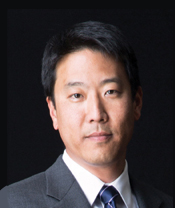Harold Hwang wins prestigious European physics prize
HAROLD Y. HWANG, a professor of applied physics and of photon science, has been awarded the 2014 EPS Condensed Matter Division Europhysics Prize for his role in the discovery and investigation of electron liquids at oxide interfaces. The prize, which Hwang shares with fellow scientists Jochen Mannhart and Jean-Marc Triscone, will be presented at a session of the 25th General Conference of the EPS Condensed Matter Division in Paris this August.
An outstanding challenge in condensed matter science has been to develop alternatives to conventional semiconductors for the future generations of electronic devices. Of particular interest for such devices are interfaces of transition metal oxides having strongly correlated conduction electrons with highly tunable properties. However, such interfaces have been exceptionally difficult to prepare.
A major step forward in the preparation of oxide interfaces was achieved by Hwang and co-workers employing a pulse laser deposition technique to grow highly controlled metallic interfaces between lanthanum aluminate and strontium titanate. Importantly, quasi-two dimensional conducting channels on strontium titanate interfaces with remarkably high mobilities and carrier densities have been achieved. This has led to a rapid growth in the study of two-dimensional electron liquids in oxide interfaces – the modern counterparts of two-dimensional electron gases in conventional semiconductors. This marks the beginning of a new era in the field of quantum electronic devices.
The EPS CMD Europhysics Prize is one Europe’s most prestigious prizes in the field of condensed matter physics. It is awarded every two years in recognition of recent work by one or more individuals for scientific excellence in the area of condensed matter physics.
— By Bjorn Carey


